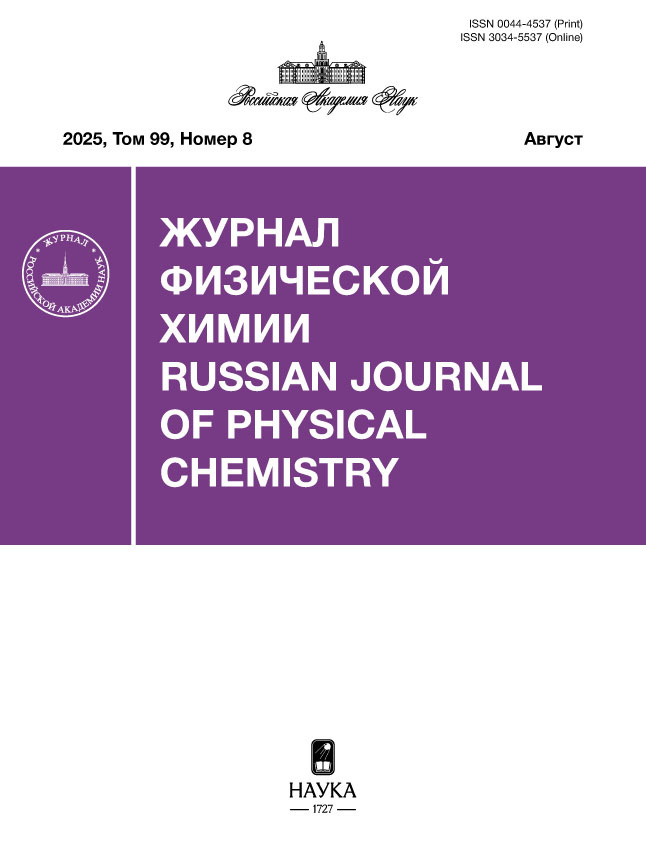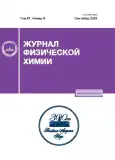Quantum-Chemical Simulation of 13C NMR Chemical Shifts of Fullerene C60 Exo-Derivatives
- Authors: Tulyabaev A.R.1, Khalilov L.M.1
-
Affiliations:
- Institute of Petrochemistry and Catalysis, Ufa Federal Research Center, Russian Academy of Sciences
- Issue: Vol 97, No 9 (2023)
- Pages: 1272-1277
- Section: STRUCTURE OF MATTER AND QUANTUM CHEMISTRY
- Submitted: 26.02.2025
- Published: 01.09.2023
- URL: https://rjdentistry.com/0044-4537/article/view/668665
- DOI: https://doi.org/10.31857/S004445372309025X
- EDN: https://elibrary.ru/XPRCMG
- ID: 668665
Cite item
Abstract
The 13C NMR chemical shifts of fullerene C60 exo-derivatives were calculated using quantum chemical hybrid functionals combined with Pople, Dunning correlation-consistent, and def2-TZVP split valence basis sets taking into account the solvent effect (polarizable continuum model). A relationship between theoretical and experimental 13C NMR chemical shifts (CSs) is assessed quantitatively to select a functional/basis set combination. It is found that the CAM-B3LYP/6-31G and M06L/6-31G combinations have the best convergence with experimental data in modeling the 13С NMR CSs of sp3 fullerene carbon atoms in С60 derivatives, whereas X3LYP/6-31G and CAM-B3LYP/6-31G(d) in modeling the 13С NMR CSs of their sp2 fullerene carbon atoms.
Keywords
About the authors
A. R. Tulyabaev
Institute of Petrochemistry and Catalysis, Ufa Federal Research Center, Russian Academy of Sciences
Email: tulebeich@gmail.com
450075, Ufa, Russia
L. M. Khalilov
Institute of Petrochemistry and Catalysis, Ufa Federal Research Center, Russian Academy of Sciences
Author for correspondence.
Email: tulebeich@gmail.com
450075, Ufa, Russia
References
- Hauke F., Chen Z.-F., Hirsch A. // Polish J. Chem. 2007. V. 81. № 5–6. P. 973.
- Fileti E.E., Rivelino R. // Chem. Phys. Lett. 2009. V. 467. № 4–6. P. 339.
- Liu T., Misquitta A.J., Abrahams I. et al. // Carbon. 2021. V. 173. № P. 891.
- Kaminský J., Buděšínský M., Taubert S. et al. // Phys. Chem. Chem. Phys. 2013. V. 15. № 23. P. 9223.
- Sun G., Kertesz M. // J. Phys. Chem. A. 2000. V. 104. № 31. P. 7398.
- Sun G., Kertesz M. // Ibid. 2001. V. 105. № 22. P. 5468.
- Sun G., Kertesz M. // Chem. Phys. 2002. V. 276. № 2. P. 107.
- Tulyabaev A.R., Khalilov L.M. // Comput. Theor. Chem. 2011. V. 976. № 1–3. P. 12.
- Tulyabaev A.R., Kiryanov I.I., Samigullin I.S. et al. // Int. J. Quantum Chem. 2017. V. 117. № 1. P. 7.
- Frisch M.J., Trucks G.W., Schlegel H.B. et al., Gaussian 09. 2009, Gaussian, Inc.: Wallingford, CT, USA.
- Meier M.S., Spielmann H.P., Bergosh R.G. et al. // J. Am. Chem. Soc. 2002. V. 124. № 27. P. 8090.
- Meier M.S., Spielmann H.P., Bergosh R.G. et al. // J. Org. Chem. 2003. V. 68. № 20. P. 7867.
- Djojo F., Herzog A., Lamparth I. et al. // Chem. Eur. J. 1996. V. 2. № 12. P. 1537.
Supplementary files

















